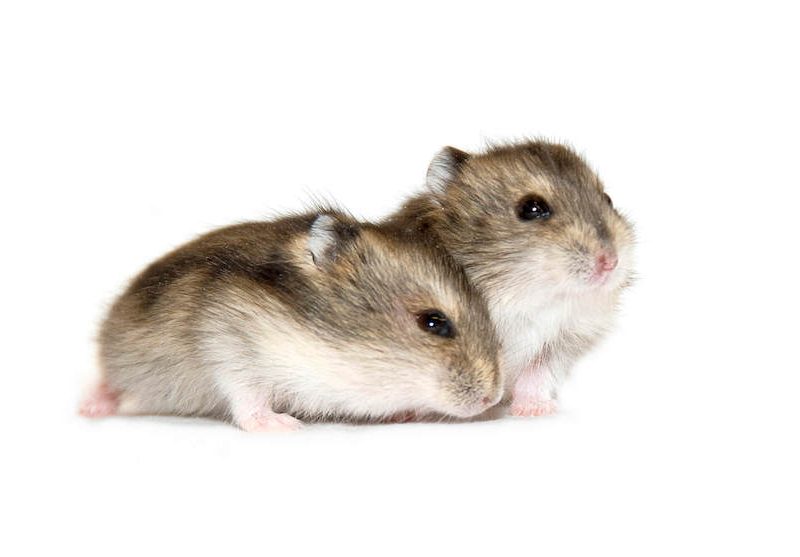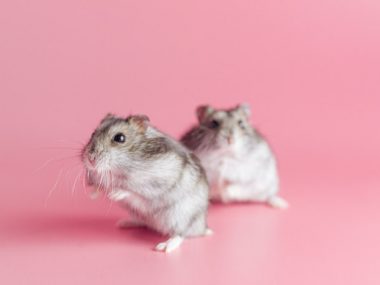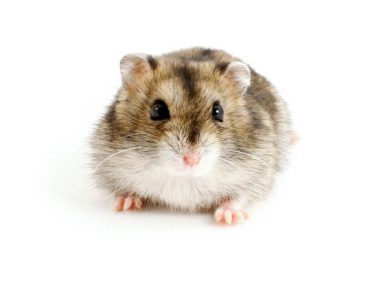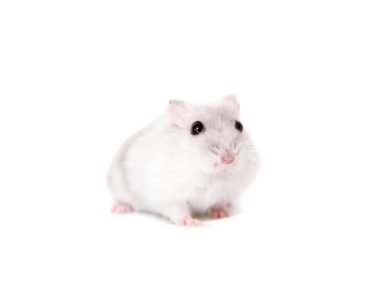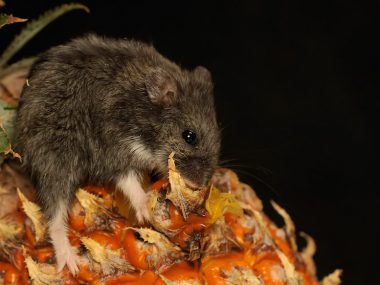Did you know “Djungarian” is an umbrella term for describing multiple species? But since you’ve landed on this page, you are probably interested in buying and carrying for a Djungarian hamster. Wondering what makes this breed such a great choice? We are going to surely learn something new about hamsters you didn’t know before!
Table of Contents
What Is A Djungarian Hamster?
The Djungarian hamster belongs to the Phodopus genus. This hamster is one of several dwarf species that fall under the same genus. There is an ongoing debate about the classification of Djungarians which we will help to make sense of.
A Djungarian hamster is also often referred to as a winter white dwarf hamster or Russian dwarf hamster because of its fur coloring.
Djungarian Classification
According to the Laboratory Animal Medicine (Third Edition 2015), Djungarian hamsters are classified as Phodopus campbelli AND Phodopus sungorus. It goes on to state “Djungarian” is a term used to reference either of these species. Contrastly, the Integrated Taxonomic Information System (ITIS) classifies Djungarian hamsters as Phodopus sungorus.
Djungarian hamsters are native to a region in central Asia in the Altai Mountains that cover bordering corners of Russia, Mongolia, Kazakhstan, and China.
The Background Of Djungarian Hamsters
To simplify things and not get lost in the scientific literature and debates, here’s a lowdown on the Djungarian hamster origins. Stephan Steinlechner, Department of Zoology, School of Veterinary Medicine, Hanover, Germany, has a great explainer of the Djungarian hamsters’ origin and evolution.
Djungarian hamsters belong to the Phodopus genus. This genus is composed of several species of hamsters (all of which are dwarfs.)
Genus | Species | Species |
| Phodopus (dwarf hamsters) | Phodopus sungorus | Phodopus roborovskii |
|
| |
Subspecies | ||
Phodopus campbelli (Campbell hamsters) | ||
| Hybrids | ||
Winter White Russian dwarf hamsters Sunfire Djungarian hamsters |
Subspecies are similar to “children” of a species. Hybrids are not considered a species of their own but more or less a “variety,” which is done through selective breeding. Selective breeding is done to achieve specific colors of coats, patterns, behaviors, etc.
So, are Djungarian hamsters the same as Campbell, Winter White Russian, Siberian, and Sunfire Djungarian? Indirectly yes, because Djungarian hamsters are a parent species to Campbells, Winter White Russians, and Sunfires. “Siberian” is interchangeably used in place of “Djungarian,” so in essence, they are the same thing.
Djungarian Hamster Characteristics and Traits
Please keep in mind that “Djungarian” is an umbrella term used in referencing numerous dwarf hamsters (Djungarian, Siberian, Campbell, Winter White Russian, Sunfire.) Respectively, there are slight variations to each breed.
Dunjarian Hamster At A Glance
- Coat: short-hair
- Colors: gray, white, cream,
- Patterns: roan, dominant spot
- Self or Agouti: self, possibly slight agouti
- Eyes: black or red
- Size: 3-4 inches
- Lifespan: 1-2 years
- Diet: herbivore, granivore
- Temperament: high energy
- Level of care: moderate
Djungarian Hamster Coat Characteristics
Djungarian hamsters have short hair and are typically gray with a predominant stripe on their back. Its underside is lighter or white. These hamsters may be completely white or feature a lovely blue-gray coat. The distinct feature of a Djungarian is their hairy feet. There isn’t a pronounced agouti presence of crescent on the cheeks but rather a white abdomen in many.
A unique characteristic of Djungarians is that some of them may turn white during the winter months. This is why they are often referred to as Winter White Russian.
- Roan
- Predominantly cream or white
- Head may be heavily colored or have no color
- Head coloring tapers off, becoming pale or disappearing towards the tail
- May have red eyes
- Dominant Spot
- Predominantly white with random patches or spots of color
- Agouti
- Crescent shape is present on the cheek
- Abdomen area is lighter
Eyes, Ears, and Tail Characteristics
Djungarians can have black or red eyes. It’s not unusual to find one with pink eyes on occasion. White markings are located above each eye that looks similar to eyebrows. The base of their ears and around their nose is covered in white. The tail is rather stubby in appearance.
Djungarian Hamster Size
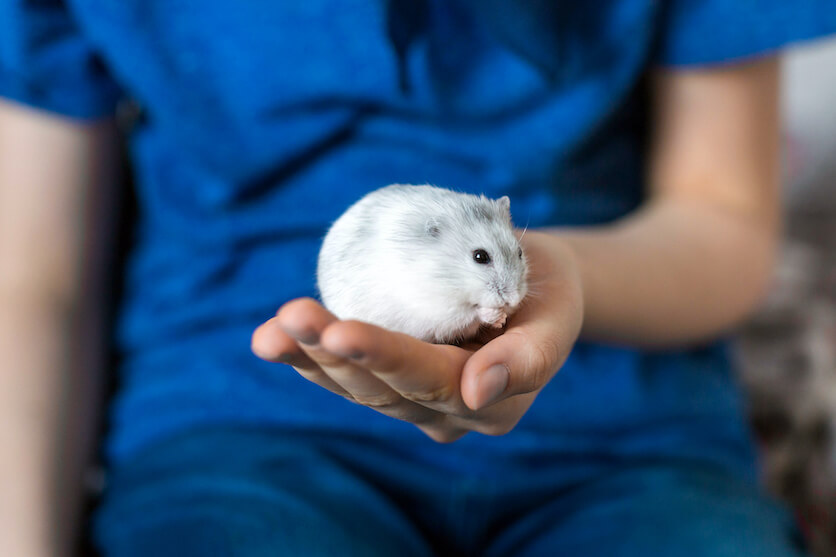
Dwarf hamsters require special handling. Djungarians grow to be about 3-4 inches long and may weigh up to 1-2 ounces (about the weight of one AA battery.) Male hamsters are larger than females reaching about 4” long and weighing 2 ounces. Females grow to be about 3 inches long and weigh about 1.5 ounces.
Come wintertime; the hamsters may lose as much as 40-50% of their body weight because of their circadian rhythm that mimics their natural instinct to hibernate in the wild when it grows cold. So don’t be worried if that happens to your pet!
Djungarian Hamster Lifespan
As with other dwarf hamsters, Djungarians also have short lifespans. If raised in the ideal environment and well cared for, they may live up to 2 years. Some may only thrive for a short 9 months. Because these little guys are rambunctious and bursting with energy and their tiny size, they are highly vulnerable to jumping out of hands or being accidentally dropped. Genetics, quality of care, and the environment play a vital role in the longevity of a hamster.
Djungarian Hamster Behavior
Djungarian hamster temperament may be a bit on the “tightly wound up” side because of their tiny size. They typically prefer to live alone although some have been paired with another of their own species. Most dwarf hamsters are hypervigilant and overly stressed. However, they are easier to handle and tame compared to other dwarfs.
Are Djungarian Hamsters Friendly?
Djungarians are one of the more popular dwarf pet hamsters because they are friendly. Once they have gotten to know you, they can be quite docile and amiable. Compared to their counterpart, the Roborovski, Djungarians are tiny little balls of sweetness. However, as with any hamster, being caught by surprise or suddenly woken up, may lead to biting.
Do Djungarian Hamsters Like To Be Held?
They are okay with being held. Dwarf hamsters are highly energetic and tend to be hard to keep within a pair of cupped hands. However, with proper handling and taming, your hamster will come to know you and feel more comfortable in being held.
How To Tame A Djungarian Hamster
Any hamster new to a home will need to be trained. Unlike the Roborovski hamster, Djungarians are much easier to tame. You will need patience in taming your hamster and allow it to fully acclimate to its new environment and you.
When you bring your new hamster home, it will need time to get used to the new surroundings. As tempting as it may be, avoid reaching in and grab it and hold it. Instead, place the hamster cage in a quiet area near you where you can talk to your pet. Your voice is something it will come to recognize first.
Place a piece of fabric with your scent on it inside the cage. This can be a sock, handkerchief, or scarf. Continue to talk to your hamster for a few days before actually handling it. By about day 3, you can try to take your hamster into your hands. Cup your hands together and scoop it up gently. Never try to grab or chase it in its cage.
When handling your hamster, do so in a confined area and on floor level. There’s a chance it may jump out of your hands and run to hide. Give your hamster treats as positive reinforcement. Lastly, be patient and work with it at their pace.
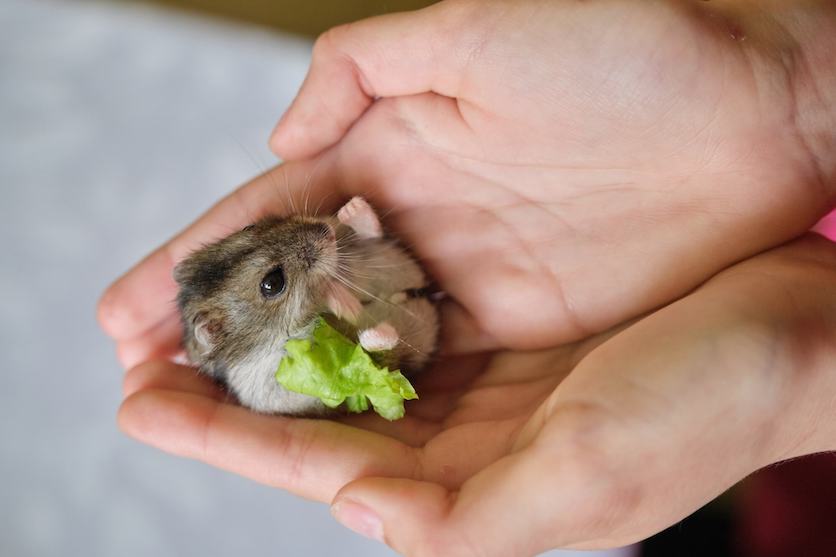
Timing is key to each taming session. Remember, hamsters are nocturnal and typically sleep during the day, so trying to have a taming session in the middle of the day may result in a grumpy hamster.
How to Care for a Djungarian Hamster Care
As a new owner, you’ll need to do a bit of prep before bringing your new Djungarian friend home. Caring for a Djungarian hamster is relatively easy:
- Set up and prepare a suitable cage before you bring it home
- Buy food for proper feedings
- Time your taming and playing sessions
- Finally, don’t forget to clean the cage regularly!
Now let’s zoom in on the above steps.
Djungarian Hamster Cage
Dwarf hamsters may be tiny, but they still need ample room to burrow deep into the bedding and run around in. There’s an array of hamster cages available on the market. Whether you want minimal or fancy, colorful or simple, there are many to choose from.
Cage Accessory Must-Haves
- Nesting box
- Bedding (cedar and pine shavings should never be used)
- Wheel
- Water bottle
- Food bowl
- Toys
Cage Placement
Good
- The room should be 64-79 degrees (F)
- The cage should be protected and out of reach of small children and pets
- Place the cage on a solid surface that supports it
Bad
- Never place the cage near sources of heat or cold air such as doors, windows, vents, fireplaces, heaters, or appliances
- Avoid placing the cage next to or near a stereo or tv because of the loud noise
Djungarian Hamster Diet
Your hamster should have access to fresh water at all times. A good quality commercial hamster food satisfies most of their nutritional needs. Things such as insects, grains, seeds, nuts, and plant matter are best.
Djungarians are not that fancy with their diet. But you must avoid giving them any toxic food (or letting them find it on their own!).
Never Feed To Your Hamster:
- Alcohol
- Caffeine (chocolate, tea, coffee, etc.)
- Citrus (oranges, lemons, limes, grapefruit, etc.)
- Nightshade vegetables (potatoes, tomatoes)
- Onions
- Garlic
How Big Do Djungarian Hamsters Get?
Djungarian hamsters are dwarfs and typically do not get bigger than 4 inches. Their compact size makes them ideal for apartment pets. Once you have tamed your little hamster, you may find that placing it into a warm pocket to cuddle on a cold day is something it will come to welcome.
How Much Does A Djungarian Hamster Cost?
Djungarian hamsters may be a bit challenging to find in a local pet store. You may have better luck finding one through a reputable breeder.
Overall, budget for the following costs:
- Djungarian hamster: $15-$30 (USD)
- Cage: $15 – $300 (USD)
- Accessories (wheel, nesting box, bedding:) $30 – $65 (USD)
- Food: $5 – $15 (USD) per month
Djungarian Hamster as a Pet: Well Worth Considering!
Djungarian hamsters have been known to make great little pets when in the right environment. Do your homework and read up on everything there is to know about these little guys. By investing a little time, you may find yourself enjoying the companionship of one for several years to come!
